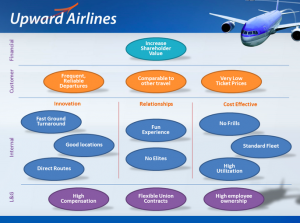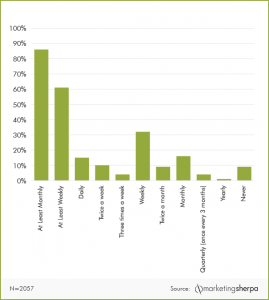We’ve all read the statistics that show how much more expensive it is to acquire a new customer than it is to increase revenue from an existing account, but this tenet is crucial for the survival of SaaS startups. SaaS organizations compete in a highly-technical arena and face intense levels of competition on a daily basis. Because of this, they tend to spend more than other B2B organizations to acquire customers, further highlighting the need to maximize revenue from every account.
Research indicates that the average cost of sales for an SaaS startup is 92 percent of the value of the contract in the first year, so companies have to find new ways to provide value for customers in order to compete. By equipping your sales team with the right strategy, innovative tools, and powerful data, you can ensure that you are providing your customers with the optimal set of solutions for their needs, and safeguarding the future of your company by reducing the cost of sales.
Convert to an account-based sales model
Unlike lead-based sales strategies, where sales reps will begin pursuing single leads as they are identified, many SaaS organizations are finding success by implementing an account-based sales model. In account-based sales, you have one sales rep (or a team if it’s a big account) dedicated to servicing a customer’s entire company, giving them added time and flexibility to add contracts from within as time goes on. In a traditional sales environment, reps are typically juggling numerous and varied clients at a given time, many of whom operate in vastly different industries. Account-Based sales allows a single sales professional to have extra time to thoroughly research their client and company model, digging deep into their business-specific challenges in order to create a superior customer experience.
Give your team innovative technological tools that will assist them
In order to get the maximize value out of your contracts and grow your existing accounts, your salespeople need to know as much as possible about their customer’s business model and buyer persona. They’ll have a hard time accomplishing this task without the proper tools in place, so it’s up to the sales leadership to invest in relevant technology and the proper training modules to reach a level of optimal preparedness for engaging customers and upselling. Armed with a deep well of customer buying data and specialized profile information, sales professionals will be well-positioned to continually offer clients the best solutions for their business, and create sustained relationships that lead to increased value over time.
Create personalized sales collateral
If you want to encourage your customers to buy more and buy frequently in the current B2B environment, you have to engage them on a deeply personal level. Recent data indicates that providing personalized experiences for customers can increase revenue from those customers by as much as 20%. When your sales reps create pitches and sales collateral that feature elements of customization specifically for that client, the client trusts that they understand their specific journey and pain points, and are therefore uniquely positioned to offer targeted solutions. One strategy to integrate personalized touches into your sales technique is to utilize data from the marketing department to engage with the customer in their specific areas of interest. You can gather information about what kinds of content the customer has been most interested in throughout their journey with your company, and use this to create further value during the formal sales relationship.
Prioritize KPIs that are connected to increased account values
The importance of diligently tracking sales metrics and using your results to make strategic decisions about the sales process is no secret for most SaaS startups. But if you’re going to focus your strategy on maximizing the value of each contract, it helps to understand more specifically which metrics are well-suited to help you. In this regard, looking at KPIs which speak to revenue earned from deals may need to be prioritized over time-based metrics or number of new contracts signed. You can use these metrics to inform your commission and incentive structure for the sales team, which encourages them to focus their efforts on providing maximum value for each client instead of moving on once the paperwork is signed.
Understand your cost of sales to revenue ratio for each account
In any sales initiative, you have to form clear goals before you can devise a strategy for how to reach them. To help inform your goals, you’ll need to analyze your cost of sales to revenue ratio for each of your accounts in order to know how much you hope to gain from each customer in additional revenue to make it worthwhile for your company’s margins.
Business & Finance Articles on Business 2 Community(63)
Report Post






